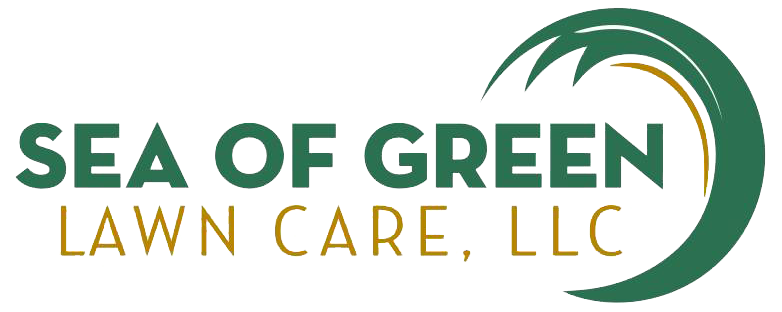Do you know what type of grass is on your lawn? With all the varieties of cool-season grass species that are common for lawns in Massachusetts, how do you know what type of grass is best for your yard? Also, how and when should grass seed be applied to your lawn? There are so many questions about grass seeding, but the professionals at Sea of Green Lawn Care have the answers. We have years of experience and knowledge in lawn care and can help choose and apply the best grass or grass blend that will revitalize your turf, keeping your lawn healthy and looking its best.
Choosing The Right Grass For Your Yard
Weather patterns are one of the most important factors in deciding what type of grass is best for your lawn. Massachusetts experiences hot summers and cold winters, with relatively average rainfall across the state. Towards the coast, the weather is typically warmer in the summer and the winter. Depending on where you live in the state the type of grass you need for your yard will differ. Also, depending on the amount of shade, sun, and water your lawn gets if it is heavily used, and how much maintenance you plan to give your yard, you might need a specific type of grass. You might even need a mixture of grass seeds or a specialty grass seed for the areas of your lawn to help it look full and vibrant!
The most common types of cool-season grasses for Massachusetts lawns are:
- Kentucky bluegrass
- Tall fescues
- Fine fescues
- Perennial ryegrass
Kentucky Bluegrass
Kentucky bluegrass leaves have a medium texture and are dark green in color. This grass has a high tolerance for cold weather and heavy wear and a moderate tolerance for heat and dry conditions. In extreme cases of heat and drought, the grass will become partially dormant but will return to normal with cooler temperatures and increased moisture. Kentucky bluegrass will grow best in lawns that have good drainage and get lots of sun, but needs more fertilizer than other types of grasses, tends to grow a thick layer of thatch, and can be more susceptible to lawn diseases like dollar spot and summer spot.
Tall Fescue
Tall fescue grasses have a thinner texture than Kentucky bluegrass and are also darker green in color. Although it takes a while for this particular grass to grow and can be slow to recover, it is more heat and drought-resistant than other species. Tall fescues perform best in soils that drain well and receive a good amount of sun. This species is more tolerant of shade than others, and only develops a small amount of thatch. However, tall fescue grasses are particularly prone to develop brown patches, red thread, and pythium blight.
Fine Fescue
Fine fescue grasses, such as creeping red fescue, chewings fescue, and hard fescue, have narrow grass leaves that are dark green. These species typically do not need a lot of maintenance and perform well even in drought or shady conditions. Fine fescue grasses do not tolerate high heat or humidity but can recover quickly if heavily affected. These grasses only produce minimal thatch but are susceptible to lawn diseases such as leaf spot, red thread, and dollar spot.
Perennial Ryegrass
Perennial ryegrass leaves have a medium texture and are usually dark green. This species grows quickly, making it particularly useful for new grass growth. Ryegrass species are resistant to heat and wear, but not to shade dry conditions or ice cover. These grasses thrive in well-drained soil, produce only a small amount of thatch, and require a good deal of nitrogen fertilization. Perennial ryegrass is prone to develop several lawn diseases such as brown patch and rust.
How And When To Add Grass Seed To Your Lawn: Overseeding
The process of spreading new grass seed over your lawn is called overseeding. It is recommended to overseed your lawn shortly after aeration, as aerated soil will give your new grass seed the best chance to germinate. Aeration creates lots of small holes in your lawn, which gives air, water, and nutrients better access to the soil and improves the overall health of your lawn. Most importantly for overseeding, these aeration holes set your new grass seed up for success by allowing the seeds to get further into the soil layer. Without aeration, overseeding could potentially waste a lot of grass seed that would get trapped on a thick layer of thatch and never sprout.
The best time to aerate and overseed your lawn is right now! For cool-season grasses like those typically found in Massachusetts lawns, late summer and early fall is the perfect weather for lawn care like overseeding. Many summer weeds that would compete with new grass seeds for air and nutrients are starting to die off, but temperatures are not quite cold enough to prevent the new grass seeds from germinating.
Sea Of Green Lawn Care Can Help Your Lawn Look Its Best
To make sure that your Massachusetts lawn has the correct type of grass for its unique situation, call Sea of Green Lawn Care. You can also call to schedule your aeration and overseeding service now. We can help revitalize the grass in your yard and keep your lawn healthy so that it looks and performs its best. You can see all of our lawn care and related services, by reaching out to us using our contact form, or giving us a call at 978-465-8788.
